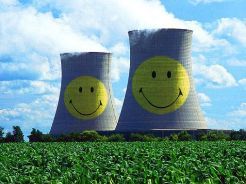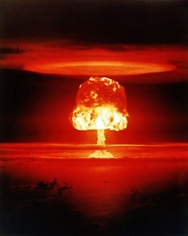Categories: Featured Articles » Interesting Facts
Number of views: 30771
Comments on the article: 1
Thermonuclear energy: state and prospects
 The article discusses the reasons why, until now, controlled thermonuclear fusion has not found industrial application.
The article discusses the reasons why, until now, controlled thermonuclear fusion has not found industrial application.
When in the fifties of the last century, powerful explosions shook the Earth fusion bombsit seemed like before peaceful use nuclear fusion energy there is very little left: one or two decades. There were reasons for such optimism: only 10 years passed from the moment the atomic bomb was used until the creation of the reactor that generated electricity.
But the task of curbing fusion turned out to be unusually complex. Decades passed one after another, and access to unlimited energy reserves was never obtained. During this time, humanity, burning fossil resources, polluted the atmosphere with emissions and overheated it with greenhouse gases. The disasters in Chernobyl and Fukushima-1 discredited nuclear energy.
What prevented us from mastering such a promising and safe process of fusion, which could forever remove the problem of providing humanity with energy?
 Initially, it was clear that for the reaction to take place, it was necessary to bring together the hydrogen nuclei so tightly that the nuclear forces could form the nucleus of a new element - helium with the release of a significant amount of energy. But hydrogen nuclei are repelled from each other by electric forces. An assessment of the temperatures and pressures at which the controlled thermonuclear reaction begins showed that no material can resist such temperatures.
Initially, it was clear that for the reaction to take place, it was necessary to bring together the hydrogen nuclei so tightly that the nuclear forces could form the nucleus of a new element - helium with the release of a significant amount of energy. But hydrogen nuclei are repelled from each other by electric forces. An assessment of the temperatures and pressures at which the controlled thermonuclear reaction begins showed that no material can resist such temperatures.
For the same reasons, pure deuterium, the isotope of hydrogen, was rejected. Having spent billions of dollars and decades of time, scientists were finally able to ignite the thermonuclear flame for a very short time. It remains to learn how to hold the plasma of fusion for a long time. It was necessary to move from computer modeling to the construction of a real reactor.
At this stage, it became clear that the efforts and resources of a separate state would not be enough for the construction and operation of pilot and pilot plants. In the framework of international cooperation, it was decided to implement a project of an experimental thermonuclear reactor worth more than $ 14 billion.
But in 1996, the United States ceased its participation and, accordingly, the financing of the project. For some time, the implementation was carried out at the expense of Canada, Japan and Europe, but it never came to the construction of the reactor.
The second project, also international, is being implemented in France. Long-term plasma confinement occurs due to a special form of the magnetic field - in the form of a bottle. The basis of this method was laid by Soviet physicists. First installation of type "Tokamak" should give more energy to the output than is spent on igniting and holding the plasma.
By 2012, the installation of the reactor should have been completed, but there is no information on successful operation. Perhaps the economic upheaval of recent years has made adjustments to the plans of scientists.
Difficulties in achieving controlled fusion spawned a lot of speculation and false reports about the so-called "Cold" thermonuclear fusion reaction. Despite the fact that no physical capabilities or laws have yet been found, many researchers claim its existence. After all, the stakes are too high: from Nobel prizes for scientists to the geopolitical dominance of the state, which has mastered such technology and gained access to energy abundance.
But every such message is exaggerated or frankly false. Serious scientists relate to the existence of a similar reaction with skepticism.
The real possibilities of mastering the synthesis and starting the industrial operation of thermonuclear reactors are pushed back to the middle of the 21st century. By this time, it will be possible to select the necessary materials and work out its safe operation. Since such reactors will operate with very low density plasma, fusion power safety will be much higher than nuclear plants.
Any violation in the reaction zone will immediately “quench” the thermonuclear flame. But safety measures should not be neglected: the unit capacity of the reactors will be so great that an accident even in the heat extraction circuits can lead to both victims and environmental pollution. The only thing left is small: wait 30-40 years and see the era of energy abundance. If we survive, of course.
See also at bgv.electricianexp.com
:
